In 1974 Porsche built its first impact-bumper G-Series models. This is pink machine is one of the most significant cars to be produced that year.
Words: Wilhelm Lutjeharms
Pictures: Rob Till
I could not believe my eyes! A few months before I drove this car, I didn't even know it existed. It all started when I visited a collector and she showed me pictures of this car, taken while she was visiting like-minded enthusiasts in Johannesburg, South Africa.
My initial thought was one of disgust – how could someone paint a 911 pink? It was quickly explained that this was, in fact, the car’s original colour, and it therefore actually has a very interesting history. A few phone calls later and an appointment was made with the owner. It turned out to be one of the most interesting 911 stories I have come across in a number of years.
What colour is it?
“I was always a Ferrari fanatic. I really, really wanted a 246 Dino GTS,” explained the owner. After he graduated from University in South Africa, he and a friend travelled to London by ship. Shortly after arriving in London, they visited the Ferrari importer, but there was no Dino in sight. Later he asked the importer to try and source a second-hand Dino, but still had no success. Shortly thereafter, Ferrari phoned him and invited him to drive the then-new 308. “I
didn’t like it”.
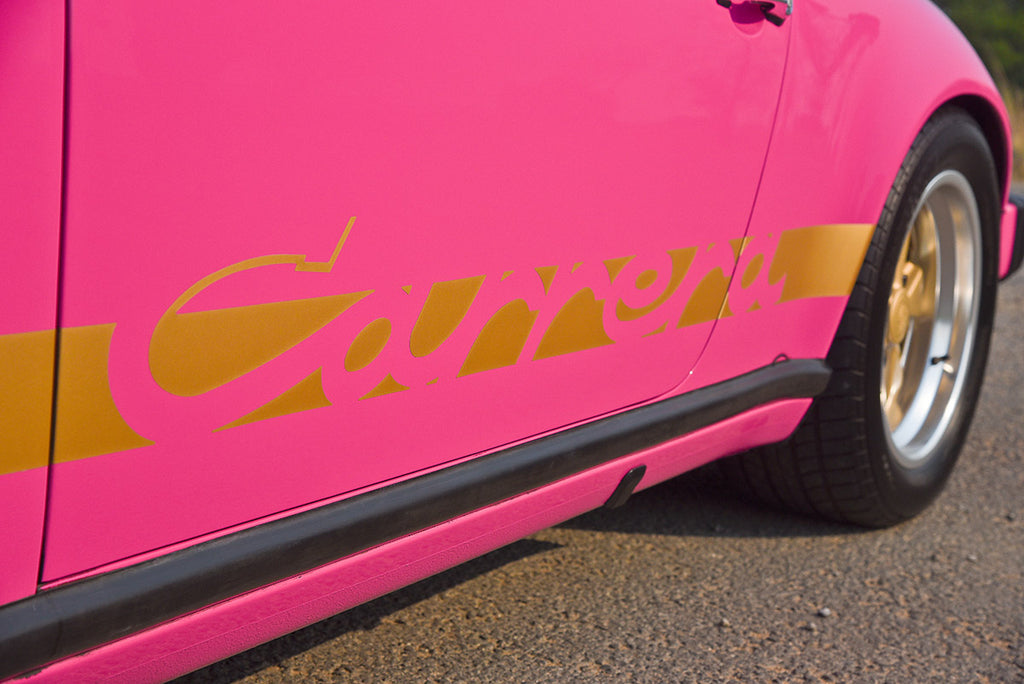
Subsequently, he drove all the other mid-engined Italian super cars, the Lamborghini Urraco, Maserati Merak and DeTomaso Pantera. “I didn’t like any of them, and then a friend said I should try a Porsche. I told him that I was not really a Porsche fan. Eventually my friend convinced me to simply test drive one. It was a bright green 2.7 Carrera which had been featured in several UK publications at the time – and we could not believe that a car could go like that! I couldn’t quite afford it, but Porsche eventually came back to me saying they had found a car for me, and it cost only slightly more than what I was prepared to pay for it.”
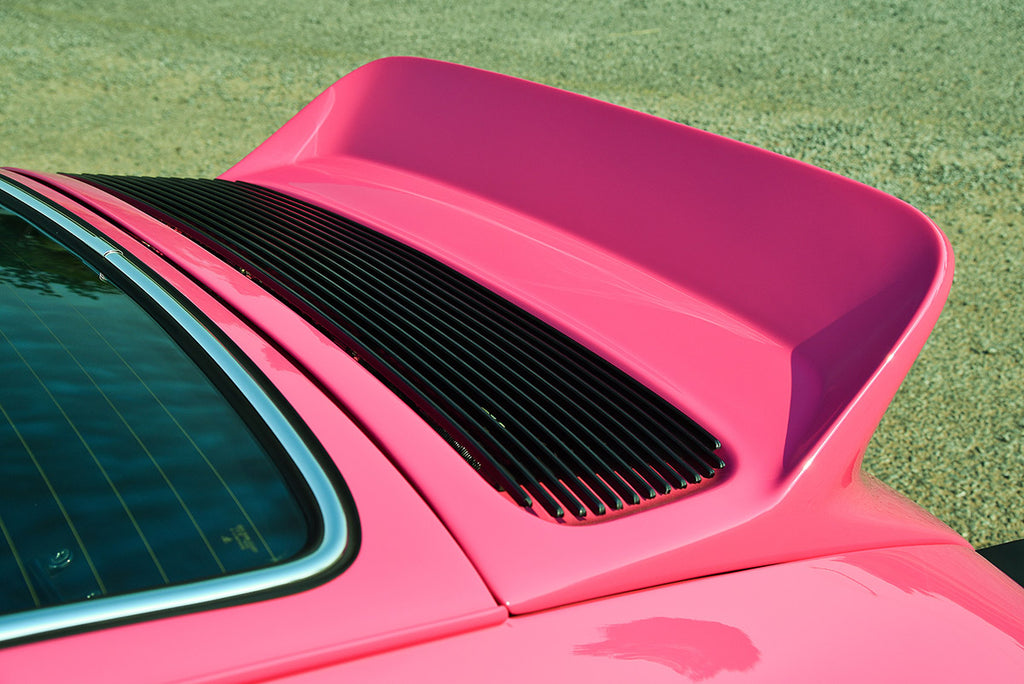
At the time the owner was so glad that he had finally procured a 2.7 Carrera, that he assumed the colour would be white, similar to the 911 S he had been interested in shortly before the Carrera deal was done. After a phone call to the sales person, the owner was even more excited: “I was told that the car was on its way, and that it was actually a ‘special colour’, called Magenta. As a youngster I didn’t know what colour Magenta was, so I asked the salesman. There was silence on the other side of the line… and then he said, 'it is a sort of pink'!"

Not convinced about the colour, Porsche eventually made a deal with him that when he left the UK, he could drive the car to Germany, where they would strip and respray the vehicle in his chosen colour, at a reasonable price. He decided to take the car. He was also informed that the car was actually used for the 1974’s Earl’s Court Motor Show, and also for another show in Manchester shortly before he took delivery of his 911.
“I eventually grew to like it, and it became a really fun car to drive.” As market prices of these early cars have proved, these quirky elements add to the car’s value today.
History
The arrival of the impact-bumpers series, which started production in the third
quarter of 1973, signaled a few significant changes for the 911. First of all the new bumpers were implemented, owing to USA regulations, but, more importantly, all engine sizes were now 2.7-litres owing to the larger 90 mm bore cylinders.
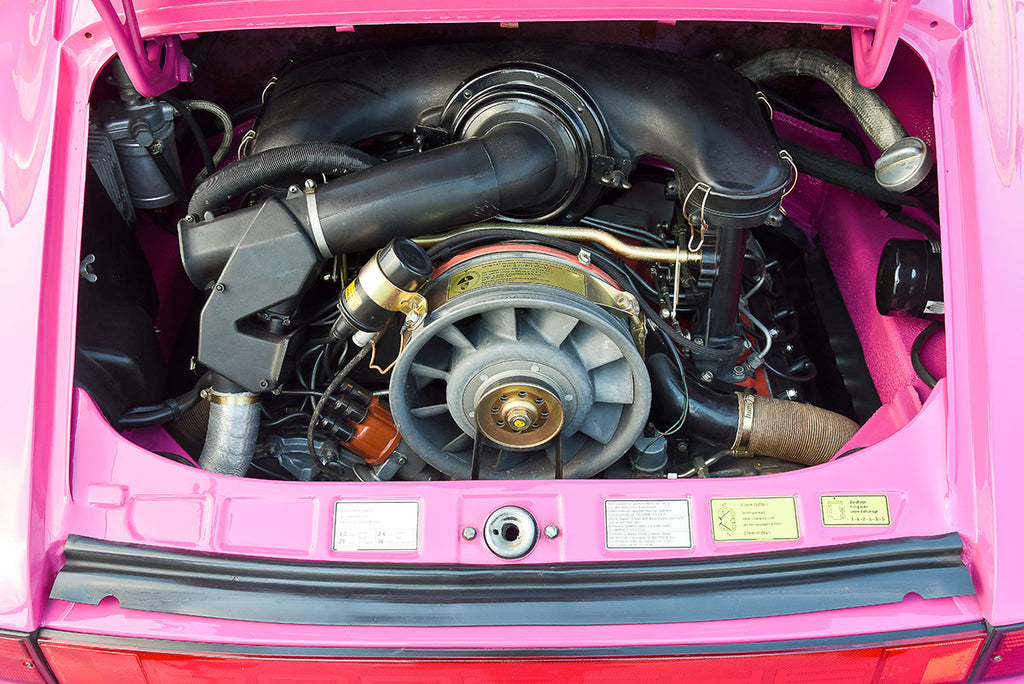
Instead of the previous T, E and S models, the range now consisted of the 911, 911 S and the top-of-the-range Carrera. The 2.7-litre Carrera engine (Type 911/83) actually remained in production for three years, almost without any change, until the end of 1975. However, it continued to be available into 1976 in countries such as Australia and South African.
To compensate for the additional weight of the impact bumpers and the changes to the structure, Porsche implemented a few updates to counter this weight increase: a single battery replaced the previous two; new seats (now with integrated headrests) were developed and aluminium inner rear trailing arms replaced the previous steel units.
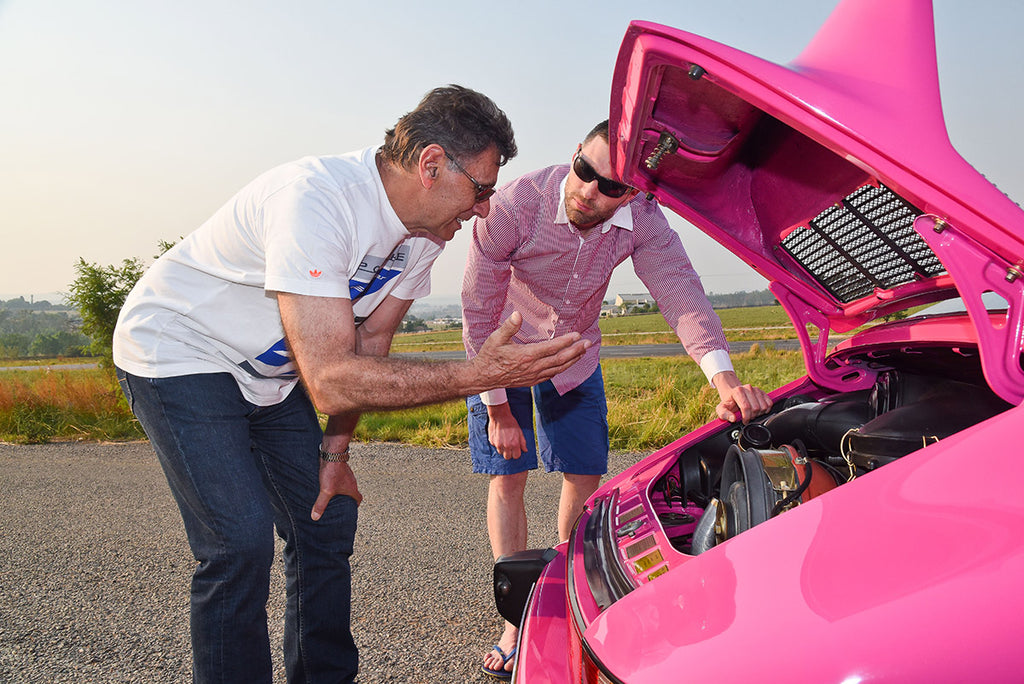
This effort paid off, and the new G-Series were not much heavier than its
predecessor. For example, a 1967 911 S tipped the scales at 1 100 kg, while this 2.7 Carrera weighed only 1 075 kg.
As with the RS, this 2.7 Carrera adopted the same duck tail. This was necessary in order to lower the amount of aerodynamic lift the car generates. Tests on the RS revealed that not only did this wing lower the Cd figure, but rear lift was reduced from 145 kg at 245 km/h to only 42 kg.
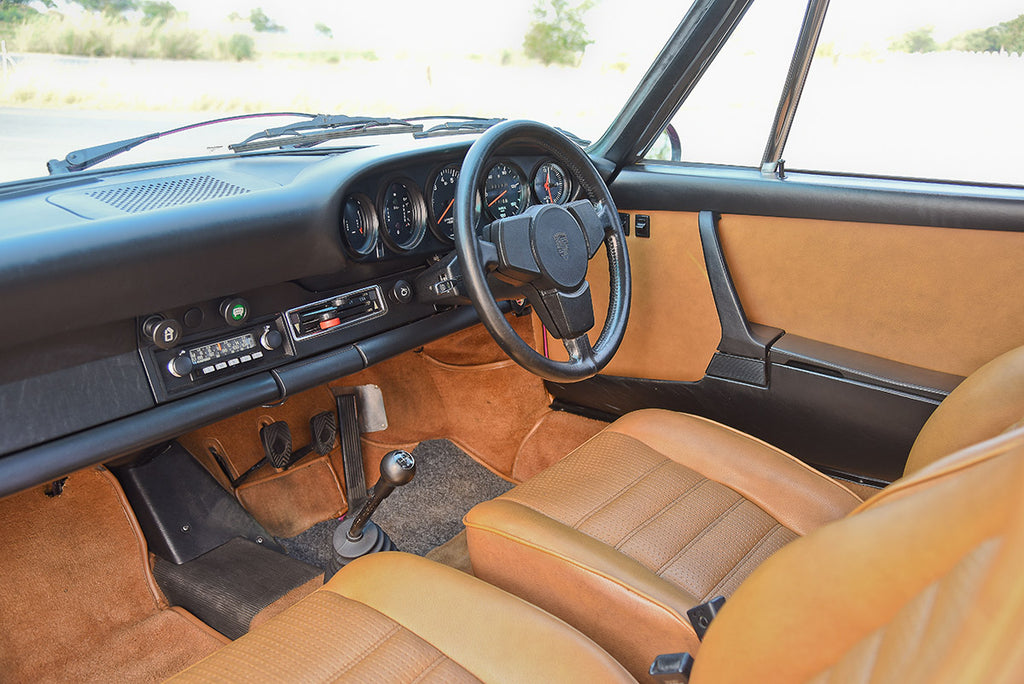
Of the current 100 000 km on the odo, just over 35 000 km were completed during the time the owner had the car in the UK. “We would drive to tracks such as Snetterton, Silverstone and Brands Hatch to watch racing. The car also took us down to Le Mans, and then we actually ended up on the track, as the officials hadn’t closed it off yet!
The amount of dices (races, ed.) this car attracts is truly amazing, in the UK and also when I returned to South Africa. At every traffic light the guys want to have a go.”

The mundane colours of the rural landscape surrounding Johannesburg further highlight the vibrant hue of the Carrera, but, as the traffic clears my attention turns from the car’s colour to the driving experience.
Behind the wheel
Even from below 4 000 rpm there is a lightness to the way the engine picks up
speed, but it is the last 3 000 rpm where you really want to keep the rev needle. Pass 4 000 rpm, there is no hesitation from the engine to rev even quicker, along with that typical flat-six mechanical sound. As the needle passes 5 000 rpm, it even swings faster past 6 000 rpm to just over 7 000 rpm. I cross the gate and into third gear and although you have to take your time with the 915 gearbox (the optional, but very popular, five-speed unit) it somehow focuses your mind on how free-revving the engine is.

Although much has been written about the inaccurate shift qualities of the 915
gearbox, this one is one of the better units I’ve experienced to date. Sometimes you still have to shift into second gear and up into first gear for a smoother first gear engagement from standstill, but despite this aspect, compared to other 915
transmissions, this one feels comparatively tight and precise.
As a few corners beckon through the mostly flat West Rand of Johannesburg, the lightness of the car, in conjunction with the firm suspension, pays dividends. Although I didn’t get close to the limits of the car’s cornering capabilities, it changes direction eagerly through the three-spoke steering wheel – the latter brimming with feedback. As it should in a proper sports car, the suspension minimises body roll and provides a very stable setup.
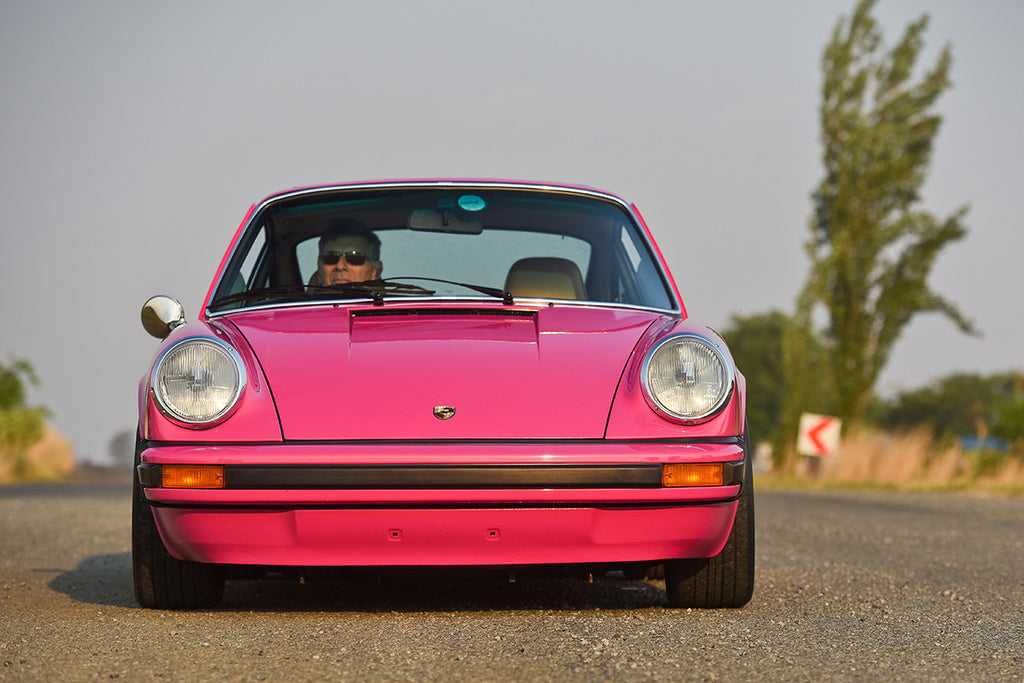
Owing to the colour of the car, you are even more aware of the compact size and extremities of the front wings. Your view may be filled mostly by the road, but first the pink wings indicate your placement on the tarmac.
Every time I drive these early air-cooled 911s, it is a stark reminder of their
performance. Fortunately these experiences are backed-up by the facts. Respected German magazine Auto, Motor & Sport tested a 2.7 Carrera and achieved the following results: 0-100 km/h in 6.1 seconds, 0-160 km/h in 15.2 seconds and a top speed of 237 km/h. Significant figures indeed. To put those into perspective, the standard 911 2.7 achieved 8.1 and 21.9 respectively, before topping out at 211 km/h.

After a while behind the wheel another stand-out element of the car surfaces... 100 000 km is a low mileage for a car of this vintage. That said, this is still a five-decade old car, but still there is a complete lack of rattles or creaks. Only when you hit a notable road irregularity one finds a sound or two which filters through to the cabin. Other than that, there is a solid feel throughout the chassis and cabin, which I’ve only experienced in a few 911s before.
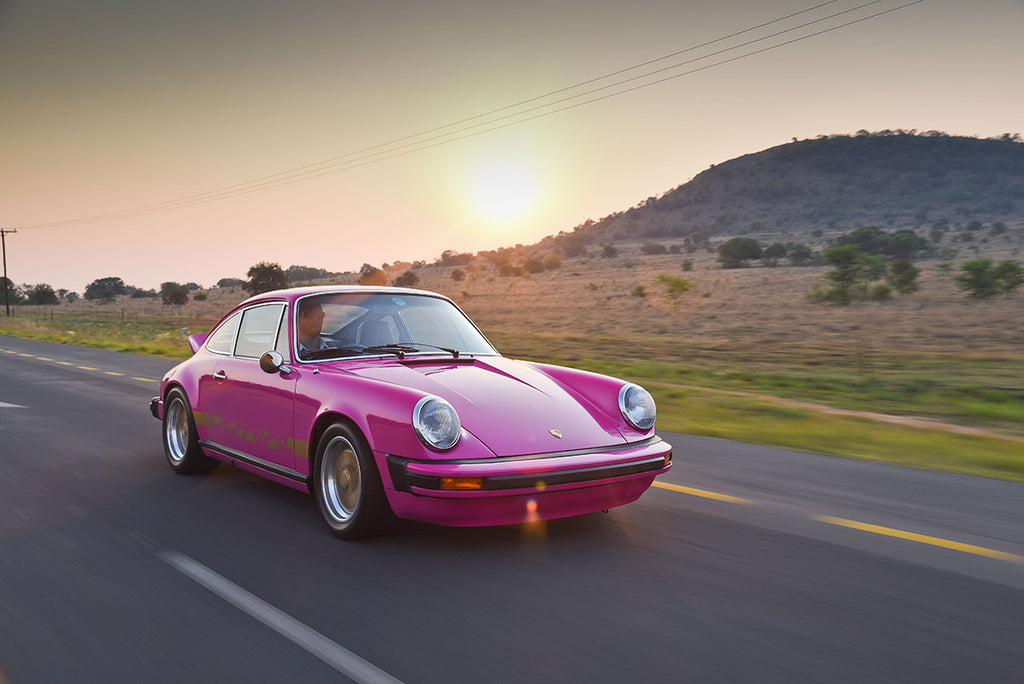
The dashboard is immaculate, offering no hint of its age. Even the light-brown vinyl seats don’t show any sign of their vintage. The only non-standard items on the car are the wheels. Originally the car came with 6-inch Fuchs wheels at front and 7-inch wheels on the back. “I bought two 8-inch wheels from a race car in the UK. These I fitted to the rear, and then two 7-inch wheels at the front.”
Instead of the original black Fuchs, he decided to have them refurbished in matching gold. Today, you'd be forgiven for thinking that is how they emerged from the factory, as it perfectly blends with the gold “Carrera” script both along the side and below the duck tail.
Heading home
When he returned to South Africa, it was the owner and his wife’s only car. This meant that when a new double-bed mattress needed to be bought, this '74 Carrera was the only car available, and the mattress was put on the roof and taken home!
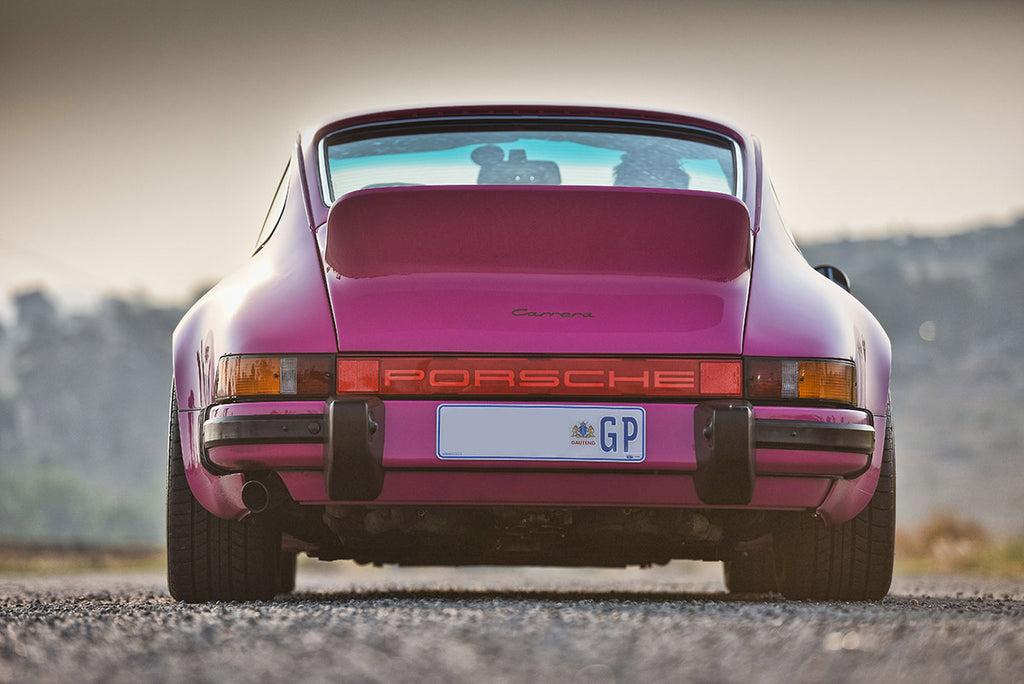
Shortly thereafter, he was offered nearly double what he had paid for the car after he had shipped it to Johannesburg. As he had just finished his studies, he considered taking up the offer, as he actually didn’t have money for tyres at that time and the canvas was starting to show. He decided against a possible sale, only to be given an even better offer a year later by a different buyer – again he refused.
Around 30 years ago the car was resprayed, and fortunately the owner decided to keep it in its period colour. And period it was. The poster for 1974’s Earl’s Court Motor Show illustrates that the main theme colour was none other than the
Magenta seen on this car.

After all these years you have to congratulate the owner for keeping the car in its
original state and colour. Although these days it is almost a non-negotiable to keep a car in its original colour, a decade or more ago, it would have been totally acceptable to change it.
Following the unprecedented rise in the value of 2.7 Carrera RSs, it is almost
understandable why the value and interest of these lesser – if you can call them that – 2.7 models have also climbed. In my view, this particular car must be one of the most significant models out there.
Specifications
Model: 1974 Porsche 911 2.7 Carrera
Engine: 2.7-litre, flat six, petrol
Power: 154 kW at 6 300 rpm
Torque: 255 Nm at 5 100 rpm
Transmission: 915, five-speed manual
Weight: 1 075 kg
0-100 km/h: 6.1 seconds (tested)
Top Speed: 237 km/h (tested)

